Our editor explores the latest release from RTI Arms - the Prophet - and asks, can old dogs learn new tricks? Find out in this air rifle test & review!
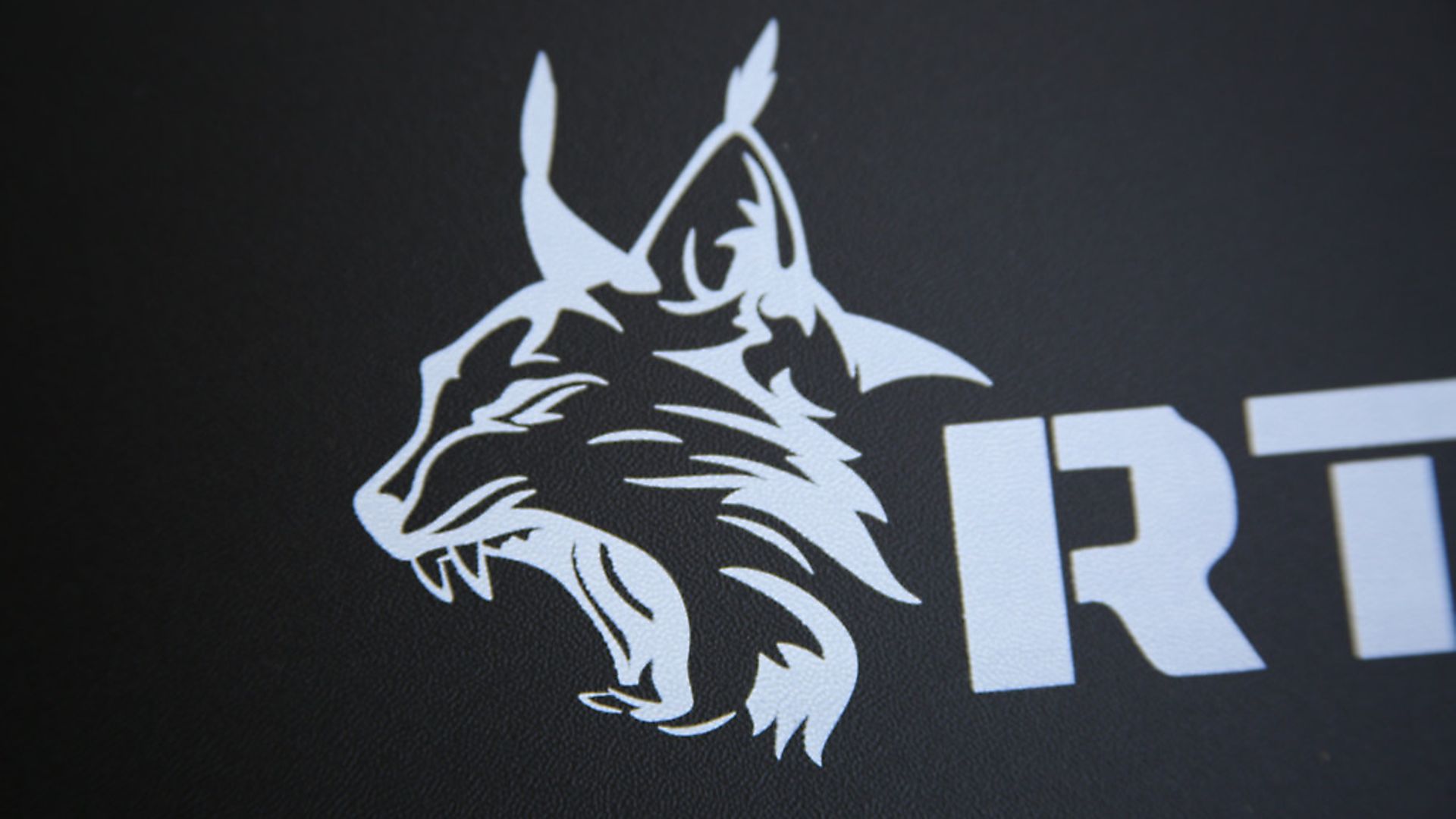 credit: Archant
credit: Archant
Unless I’m losing it at a faster rate than normal, I believe the subject of this month’s Editor’s Test is a first for me. Is the RTI Arms Prophet really the first rifle I’ve tested with its sidelever fixed to the left-hand side of the action? Yes, plenty of other models can have their levers switched, and the Priest II, also from RTI, had a left-mounted cocking system, but that was a straight-pull bolt, not this biathlon-style sidelever we see on the Prophet. Answers on an e-postcard, please.
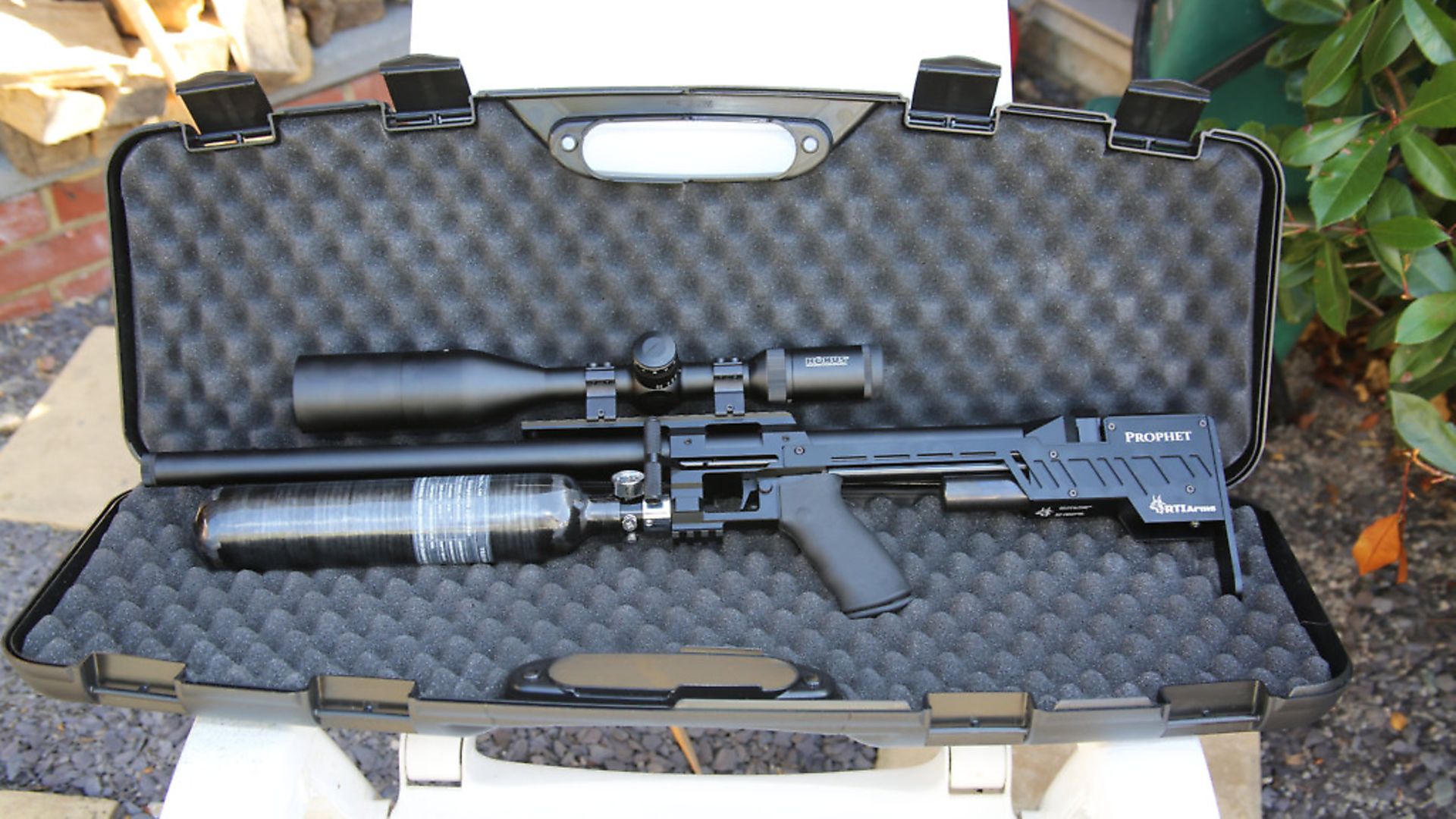 credit: Archant
credit: Archant
LEFT BEHIND?
Before I get into the technical aspects of the Prophet, and there are plenty of those, let’s see where this rifle is positioned within the airgun marketplace. Around 15 to 20% of us are southpaws, at least according to the airgun sales data. Is RTI Arms pitching its rifles – it makes just two models – at the potential left-hand market? I’ll immediately counter that with my recent findings, which show that, of course left-handers like the Prophet’s sinister sidelever, but so do plenty of right-handers.
My esteemed chum in the U.S., Jim Chapman, likes the Prophet’s lever system, and Jim is extremely highly regarded in the hunting world. He gets to shoot pretty much everything out there, too, so he has a huge comparison range from which to work. Jim’s by no means alone, either. Two of my trusted shooting consultants – basically, mates I’ve known for years and who find fault with most things – shot the Prophet for a couple of hours while I did some more research and consolidated my notes, and they grudgingly admitted that they ‘were coming round to that lefty lever’.
As an ex-southpaw who deserted the lefty ranks many years ago, I’m yet to be sold on the Prophet’s superiority in the sidelever area, but there are more than enough other aspects of it that deserve serious credit. Let’s do some detailed exploration.
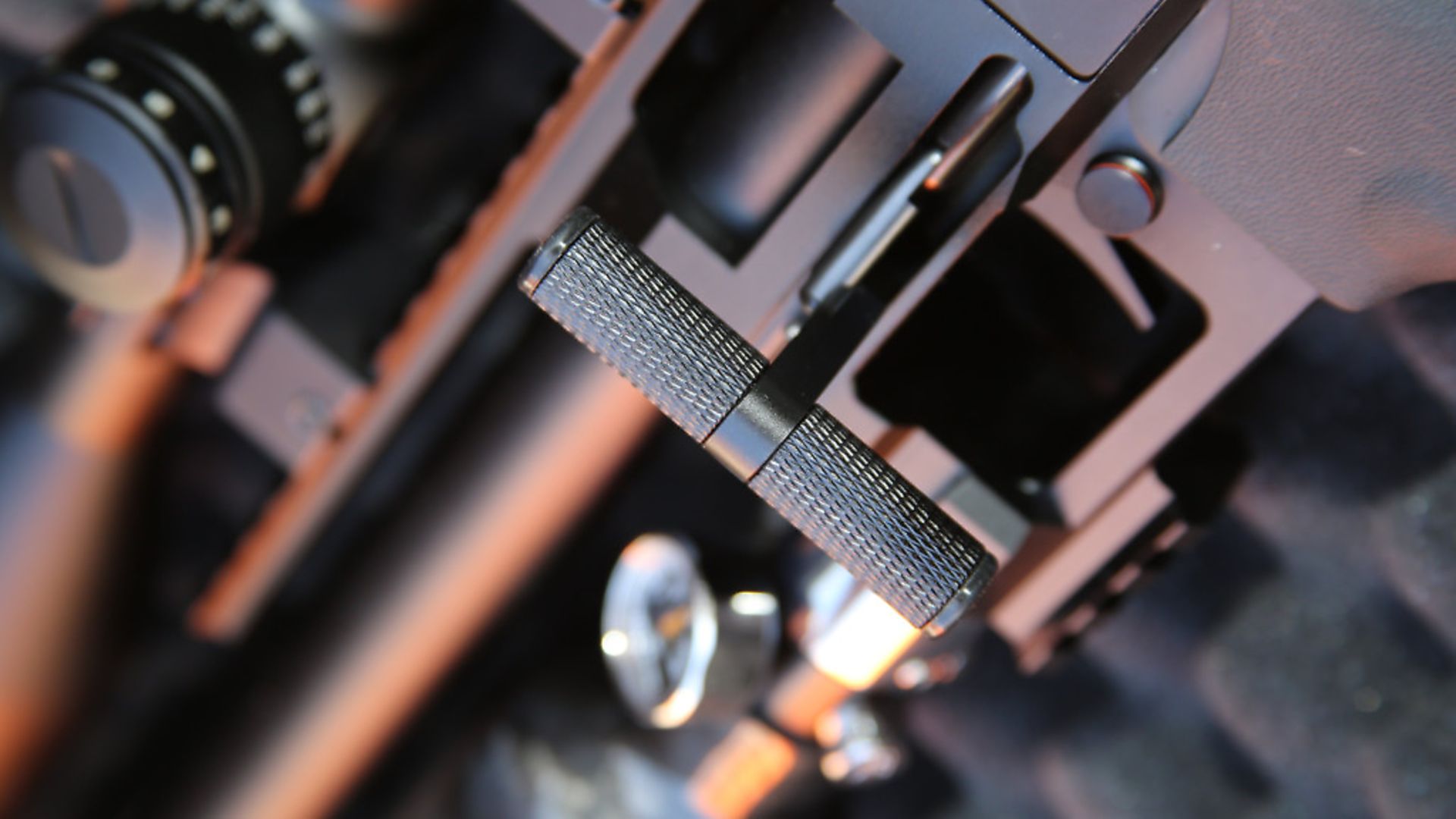 credit: Archant
credit: Archant
FULLY FEATURED
Basics first; the Prophet is a bullpup that comes in two guises; the standard edition, and the ‘performance package’. These versions can be transformed through a range of options that include a user-adjustable regulator, a butt extension that contains a hammer-spring adjuster, and a 500cc carbon-fibre air tank. There are more permutations, but I recommend you discuss these in detail with the ever-helpful Bob Phelps of City Airweapons, the UK agent for RTI Arms.
I have the standard item on test, albeit with the carbon-fibre bottle fitted. At the neck of that bottle sits the rifle’s regulator, and it’s backed by a plenum chamber at the rear of the chassis. This chamber offers an extra 22 cubic centimetres of volume over the standard 35 cc, resulting in a full 57cc of regulated airspace. This extra capacity really comes into its own with the FAC-rated, high-power versions, but my own results with the sub-12 test rifle prove that it’s doing a commendable job at this level, too.
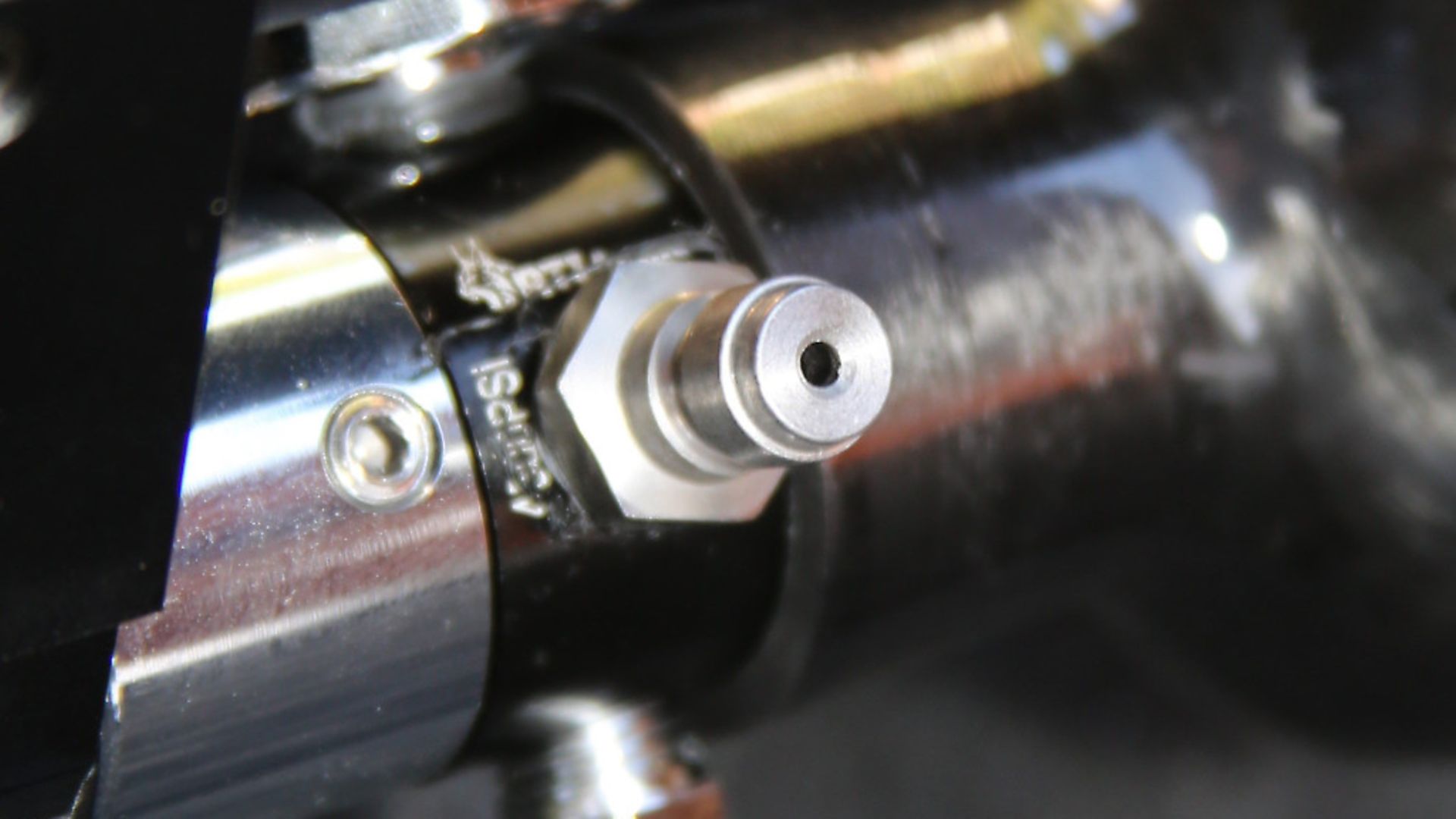 credit: Archant
credit: Archant
BARREL FACTS
In conjunction with barrel makers, Lothar Walther, RTI Arms has carried out extensive research into barrel dynamics, specifically seeking the optimum configuration for shooting pellets at extreme range, rather than the slugs which are increasing in popularity by the day with the high-power users. The RTI boffins have been demonstrably successful, too, with a Prophet on its debut beating allcomers to claim the 50-metre title at the prestigious Extreme Benchrest tournament in Arizona, last year. I’ve attended that match, and winning there is quite a claim to fame, believe me. The victorious Prophet was a .22, not a .25 or .30, which proves beyond doubt that the RTI barrel has been developed to mix it with the big boys.
For fact freaks, the twist rate of the rifling is one turn in 35 inches, with the standard, CZ-supplied barrel at 20 inches long, and the ‘long range’ Lothar Walther version at 24 inches. I’m told these are interchangeable, but swapping to the long-range barrel will definitely require the addition of a moderator, for which the shroud is threaded.
The barrel is fully shrouded, and at legal limit output at least, that shroud does a remarkable job of stifling muzzle blast, despite having no baffles inside it. As stated, removal of the shroud’s end cap reveals a threaded adaptor, so fitting a silencer would be the work of seconds.
 credit: Archant
credit: Archant
A RAIL IS A RAIL
There’s a Picatinny sight mounting rail on duty, and it’s set at an inclination of 20 MOA. It has also been beefed up a bit, compared to the Priest II, presumably to cater for larger, higher-magnification scopes. An abbreviated rail is part of the furniture below the breech, and this is often used to mount a bipod. There are more fixing bolts on the Prophet’s shroud, too, and I’d say the whole rifle has a slightly more robust feel to it, again compared to the Priest. Incidentally, RTI have not launched the Prophet to replace the Priest, and both will be offered for the foreseeable future.
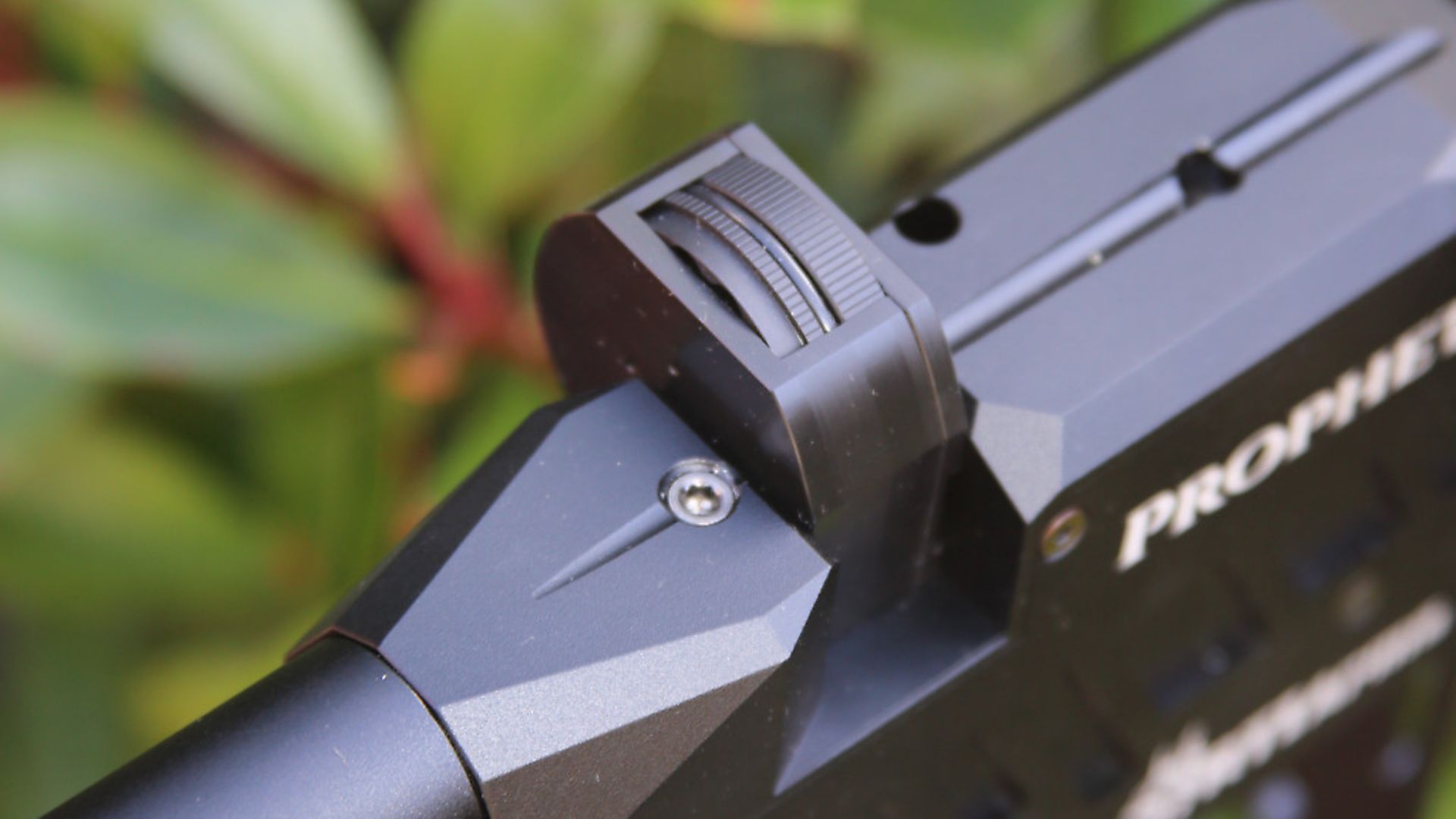 credit: Archant
credit: Archant
ALMOST AMBI
The flat contact area of the butt pad and the drop-down grip of the Prophet, plus the fact that its fore end is a bottle, means that as far as the stock is concerned, this rifle is ambidextrous. That status is further confirmed by the fact that the Prophet’s multi-shot pellet magazine can be loaded from the right or the left, provided you face the pellets the correct way round first, of course. This is another uptick for lefties, but it leaves the right-handers equally catered for, which is a neat feature in itself.
The articulated sidelever is a done deal, though, so you either learn to appreciate it, or you don’t. I’m sure, our southpaw chums will be gloating over the payback they feel has been way too long in coming.
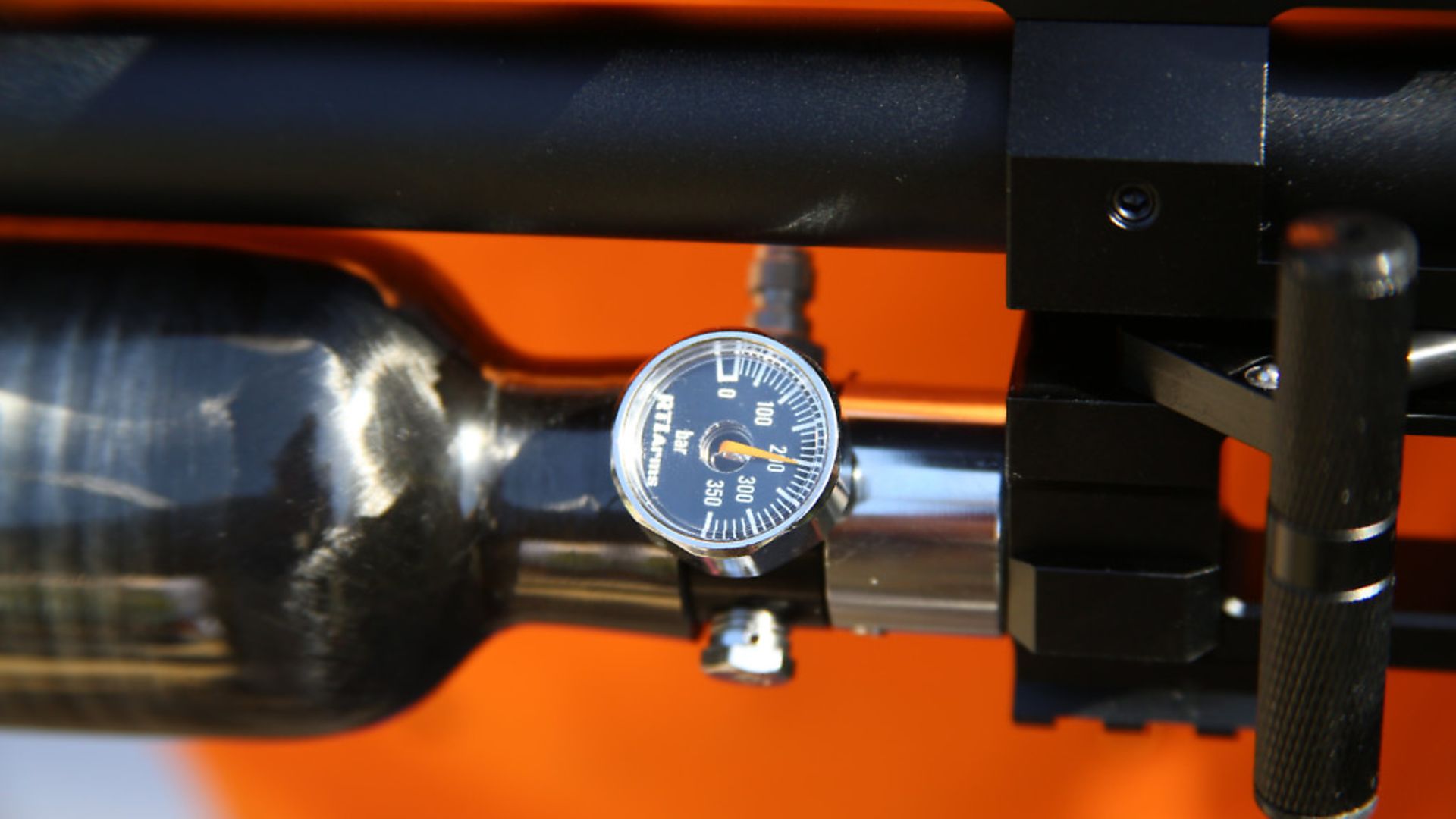 credit: Archant
credit: Archant
REDESIGNED TRIGGER
I have only the Priest II as direct comparison, but I’m confident that the test rifle’s trigger feels a touch more precise. Both units are two-stage, adjustable mechanisms, with their adjuster ports on the right-hand side of the butt, just below the magazine loading slot. Subtle interplay between these adjusters can yield a sweet trigger release in minutes, with the bonus that you can make any required changes without hassle or need to poke hex-head tools into the usual crannies under the trigger blade. I’m not a trigger tart, but the sheer accessibility of these adjusters had me refining the Prophet’s shot-release on the bench rest as I tested it, ending in a let-off pressure just above 1.5lbs. This is a top-class trigger system, backed by a push-button safety catch, and the only advance I can think of it a moveable blade.
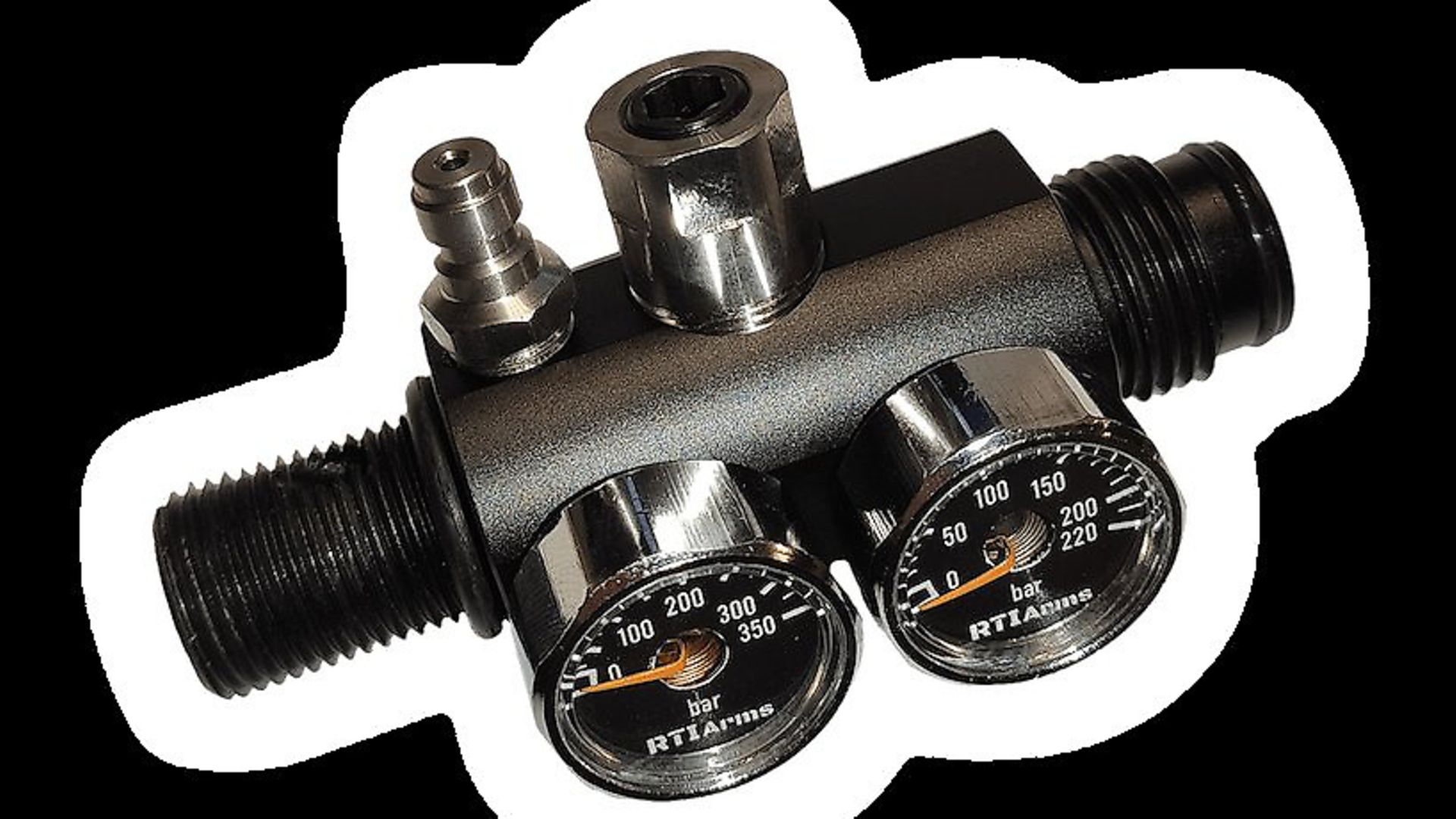 credit: Archant
credit: Archant
REMARKABLE OUTPUT
There are air rifles available that produce so many shots per charge, that, in sub-12 format at least, it just gets a bit silly. This Prophet is one of them. That 500cc air tank, when charged to 300 bar, with its factory-set regulator operating at 125 bar, will give me around 650 shots at 11.6 ft.lbs. in .22. From the .177 test rifle I can still expect over 550 shots. A high-power, FAC-rated Prophet, configured to produce 33 ft.lbs. at the muzzle, will still give its grateful owner over 100 shots per charge. Other terms are more likely to be used, but for now let’s make do with ‘blimey!’
CHRONO-AVOIDANCE SYNDROME
Now, on three unbelievably tedious occasions, I parked my pointless self at a test bench for hour after scowling hour, and blipped over 500 shots through a chronograph, to record a ‘full to empty’ record of a test rifle. The manufacturer of one of those rifles promptly changed the internal set-up of the gun I’d returned, then asked if I’d repeat the test so the results could be verified by me as an independent tester. Let’s say I ‘politely declined’, and you can bet I’ll be doing the same with this month’s test subject.
Instead, I recorded the first 100 shots from the rifle, then just shot it until it was getting close to reg’ pressure, when I did another 20-shot chrono’ test. In the real world, it matters little how many shots our PCPs do, or how few we’ve taken since the last charge, the vast majority of us re-charge our guns before using them. Thus, the first 100 shots from a charge are the ones that count most, and my reluctance to shoot away an entire charge in one session isn’t just down to me hating the process.
MY CONSISTENCY FIGURES
From a full charge, using .177 Air Arms Diabolo Field pellets straight from the tin, the entire spread over 100 shots was 16 fps. The average was 11 fps, and a separate, 50-shot string using washed, sorted and lubricated pellets dropped that average to just under 10 fps. Finally, that ‘close to reg pressure’, 20-shot sample taken right at the end of the Prophet’s charge pushed up the average variation to just 13 fps, so I’m hereby declaring the RTI Arms regulator extremely fit for purpose. As one who isn’t a major fan of regulators on sub-12 sporters, the performance of the Prophet’s reg’ now has me hankering to try the adjustable version. I expect that hankering will fade, as they do at my age, but I think I’m about as close to regulator-envy as I’ve ever been. Well done RTI.
PREPARING THE PROPHET
Charging the Prophet is simplicity itself, thanks to the snap-fit adaptor, although the total absence of any inlet-valve covering is a concern for me. Every PCP, let alone a high-performance model such as this, should have its inlet ports properly protected from contamination. Seriously, what’s the point in developing superb technology, if you’re going to leave it wide open to total failure through the ingress of dirt and grit? Until RTI Arms or a custom house sorts out an option, just find a way to keep that charging port covered.
Loading the 14-shot pellet magazine (12 shots in .22, 10 in .25), is a simple matter of dropping pellets in the empty bays, making sure each on is properly seated, and rotating the pellet-carrying wheel until the mag’ is fully loaded. The rifle must then be cocked, the magazine slotted into the breech, and the sidelever closed to load the first pellet. Job done – ready to shoot, as soon as the safety button is pushed.
LEVER ACTION
There’s a ‘noticeable’ amount of effort required to activate the Prophet’s cocking lever, and I can see why RTI Arms has moved from a straight-pull action. Compared to the Priest II, the Prophet’s internal hammer has a shorter travel before it hits the firing valve, which requires a stiffer hammer spring, which in turn means greater cocking effort, hence the need for mechanical advantage in the form of an articulated sidelever. OK, that’s cleared that up, let’s see what the Prophet does downrange.
ACCURACY REPORT
The Prophet produces groups at every viable sub-12 ft.lbs. range that will match anything out there. The best I produced came on a breathless morning, the day before this magazine was due to go to press, when I swapped the 12-times magnification scope I’d been using on the test rifle, for a 24 x model. These included two groups of 18mm diameter at 50 yards, and four of just 15 mm at 45. I’ll say it again, this is one extremely accurate rifle.
INITIAL VERDICT
The RTI Arms Prophet is a high-performance, precision shooting machine, built around a platform of internal efficiency and cutting-edge barrel technology. I’m still not loving the lefty sidelever, but the Prophet has already caused me to say ‘wow!’ several times.
Tune in next month, when I’ll know if RTI Arms and its unique approach to design really has prophesised success.
RTI Arms - Prophet rifle - Tech specs
Model: Prophet
Manufacturer: RTI ARMS
Country of origin: Slovenia
Price: £1,300 including 500cc carbon fibre bottle and multi-shot magazine
Type: Pre-charged, multi-shot, sporter
Calibre: .22, .177, and .25
Cocking/loading: Sidelever, via a 14-shot magazine (12-shot in .22, 10 in .25)
Trigger: 2-stage, adjustable, with manual, resettable safety
Stock type: Anodised aluminium, ambidextrous
Weight: 3 kg (6.6 lbs) Rifle only
Length: 762 mm (30 ins)
Barrel: 510 mm (20 ins)
Fill pressure: 300 bar
Shots per charge: 650 in .22 - 550 in .177 at sub-12 ft.lbs.
Average energy: 11.6 ft.lbs.
Contact: City Airweapons
Tel: 0121 742 1329